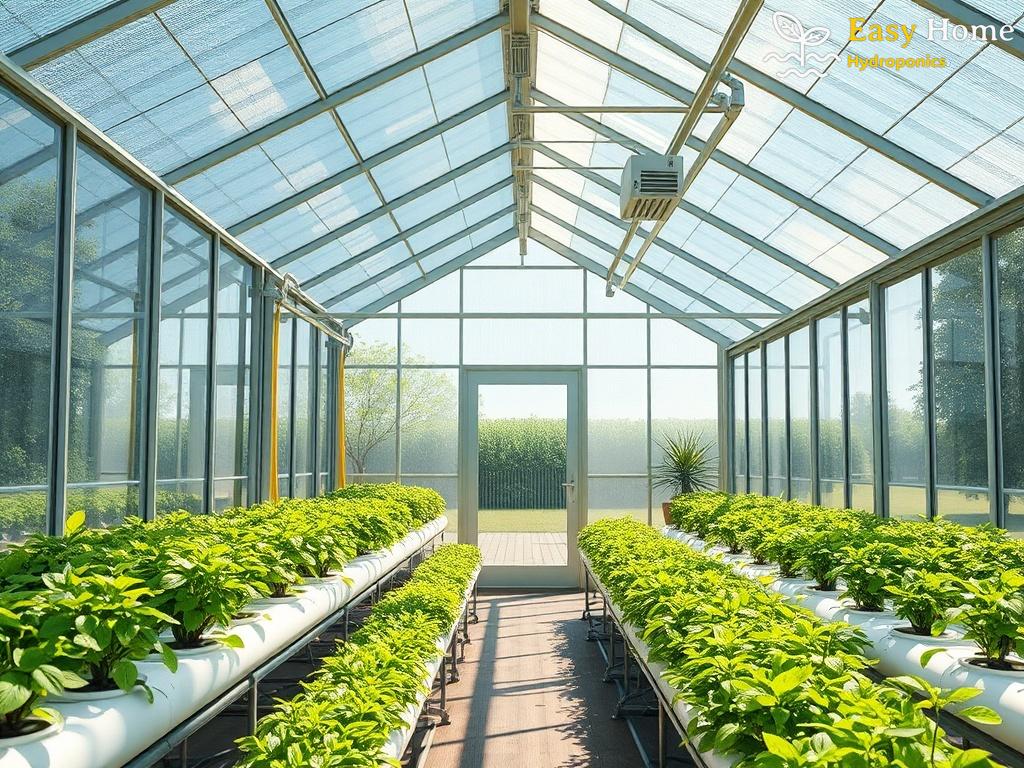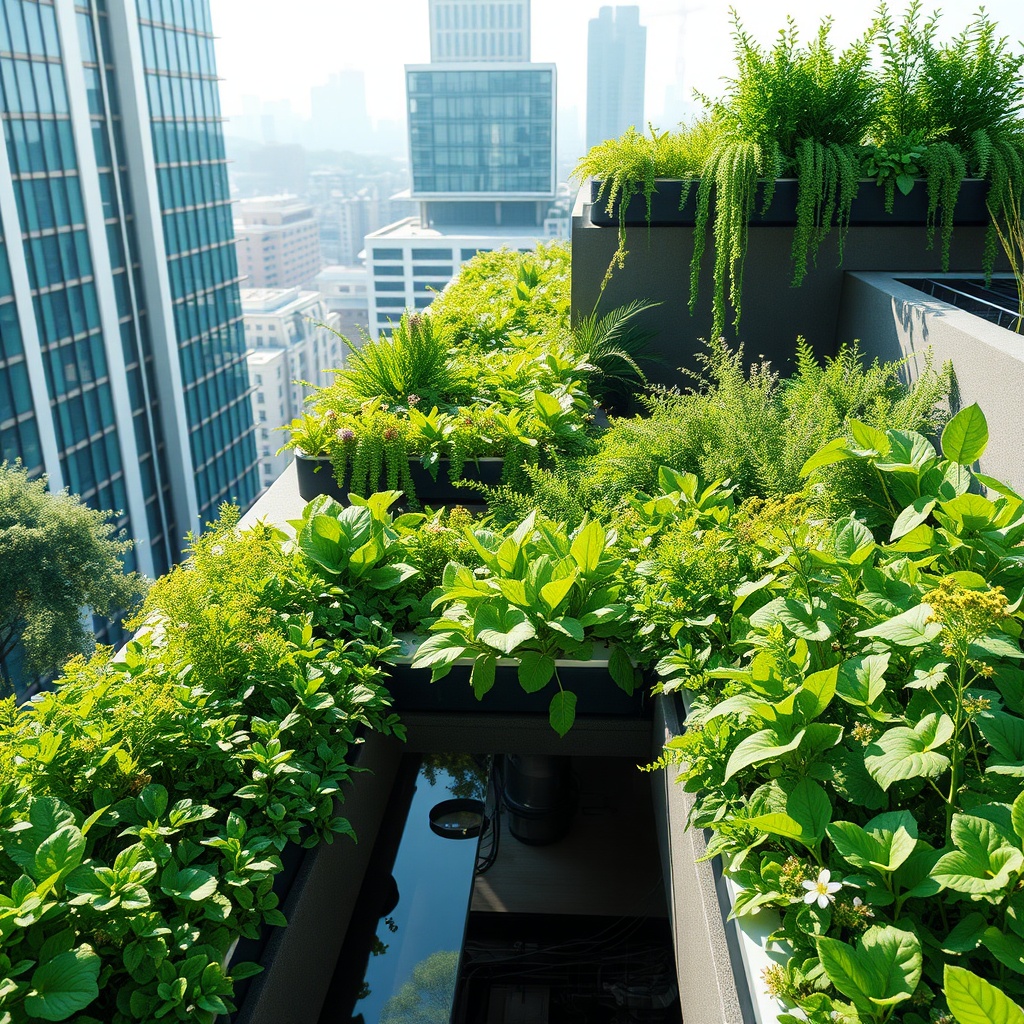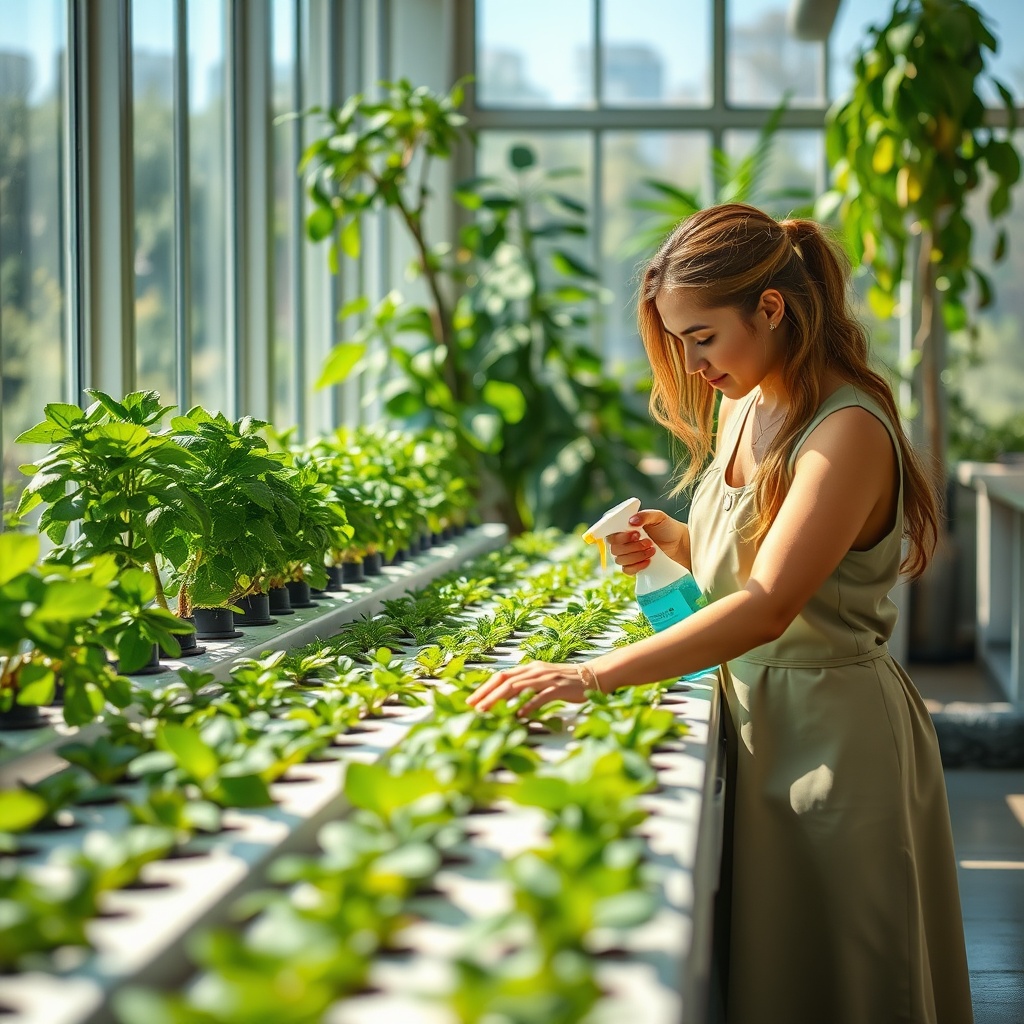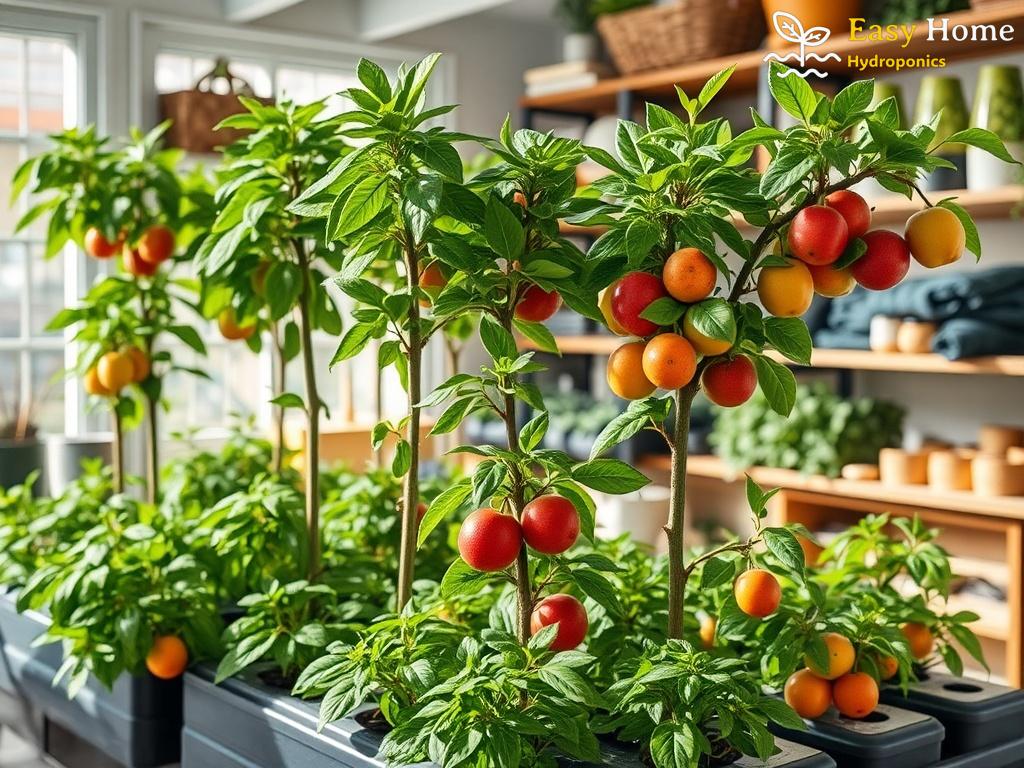Harnessing Sunlight: Innovative Roof Designs
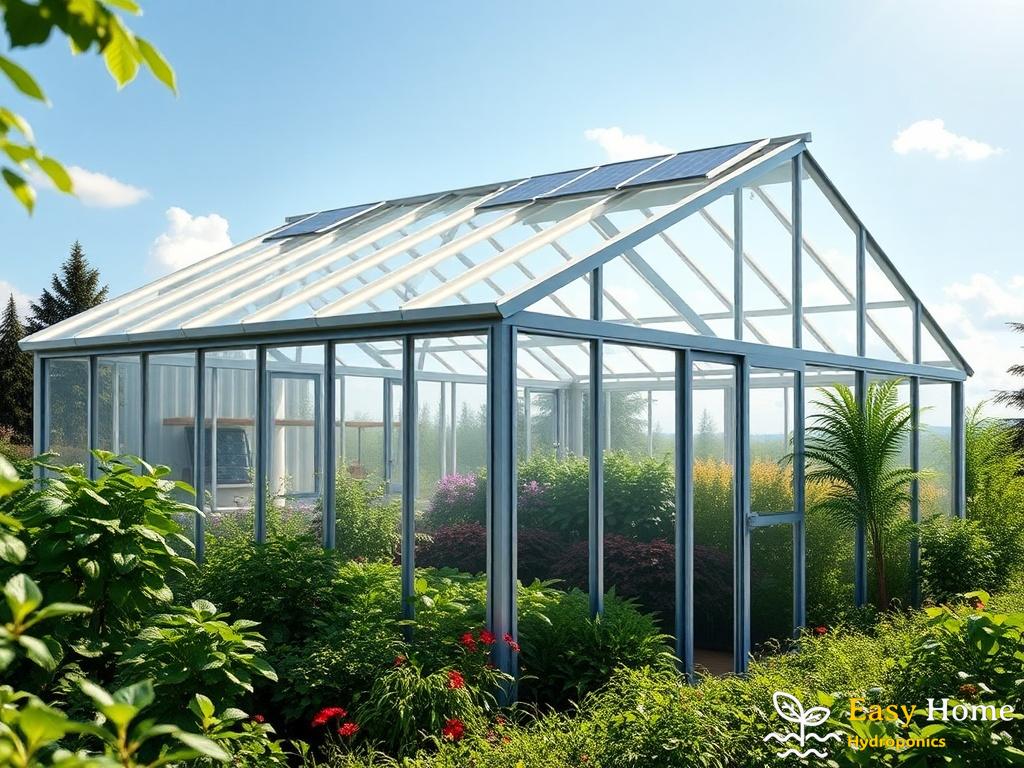
In the world of hydroponic greenhouses, maximizing natural light is not just a luxury—it’s a necessity. As growers strive to achieve optimal plant growth and yield, innovative roof designs have emerged as a game-changing solution. These roofs not only allow for ample sunlight penetration but also protect crops from harsh weather conditions. Let’s delve into the fascinating world of roof innovations that are transforming hydroponic greenhouses.
When it comes to innovative roof designs, the choices are as diverse as the plants they protect. From transparent materials to unique shapes, these architectural marvels are designed with one goal in mind: to harness as much sunlight as possible. Here are some of the most popular roof designs making waves in the hydroponic greenhouse sector:
- Geodesic Domes: These structures are not only visually striking but also offer exceptional light transmission and structural stability.
- Solar Canopies: Designed to capture sunlight while providing shade, these roofs incorporate photovoltaic cells to generate energy, making them environmentally friendly.
- Retractable Roofs: Flexibility is key! Retractable roofs allow growers to open up their greenhouses to natural sunlight while still having the option to close them during inclement weather.
To better understand how these innovative roof designs stack up against each other, here’s a comparative analysis that highlights their strengths and weaknesses:
| Roof Type | Light Transmission | Energy Efficiency | Cost |
|---|---|---|---|
| Geodesic Dome | High | Medium | High |
| Solar Canopy | Medium | High | Medium |
| Retractable Roof | Variable | Medium | High |
Each design offers unique benefits, allowing growers to choose based on their specific needs and budget. With the right roof design, hydroponic greenhouses can truly thrive, harnessing the power of sunlight to cultivate a greener future.
The Role of Transparent Materials in Light Efficiency
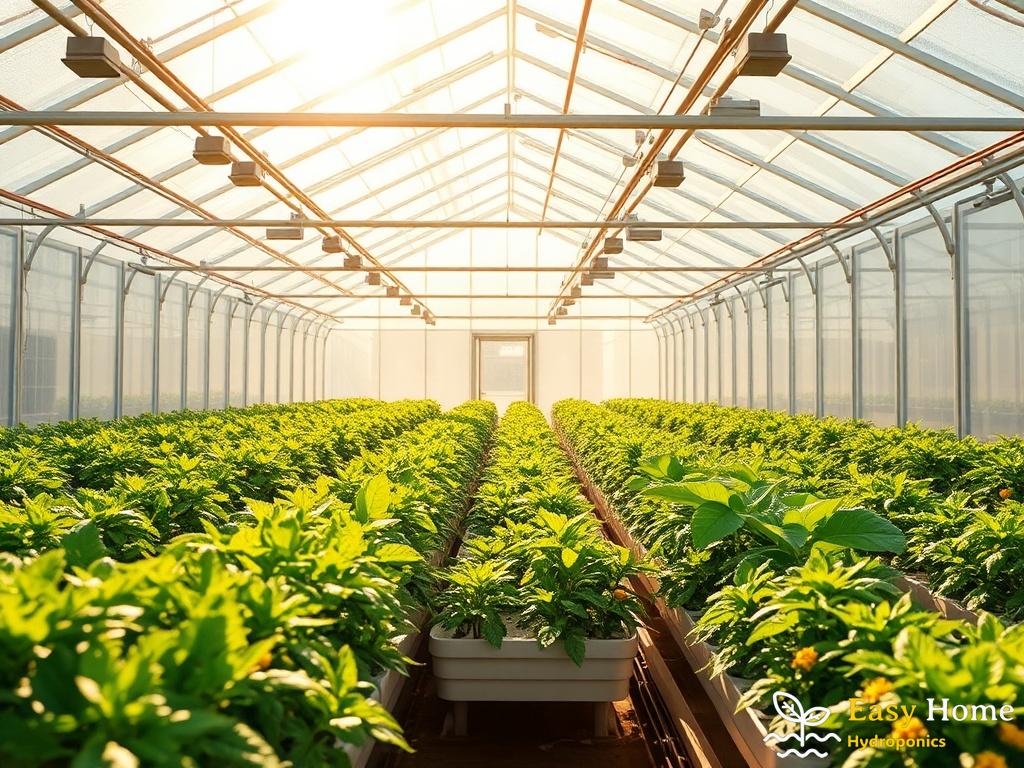
The effectiveness of hydroponic greenhouses heavily relies on the quality and quantity of natural light that reaches the crops. As we explore innovative solutions for enhancing light efficiency, transparent materials have emerged as a pivotal component in modern greenhouse design. These materials not only allow sunlight to permeate but also contribute to the overall sustainability of agricultural practices.
Transparency in greenhouse materials is not a mere aesthetic choice; it plays a crucial role in the photosynthesis process, which is vital for plant growth. The advancements in transparent materials have led to a range of options that cater to different environmental conditions and plant needs. Some of the frontrunners in this arena include:
- Polycarbonate Panels: Renowned for their durability and excellent light diffusion properties, polycarbonate panels provide high light transmission while offering protection against UV rays.
- Glass Structures: Traditional glass remains a favorite due to its superior clarity and longevity, allowing for maximum light penetration and a classic greenhouse aesthetic.
- Photovoltaic Glass: This cutting-edge material integrates solar energy harvesting, allowing greenhouses to generate electricity while still maximizing light for plant growth.
Understanding how different transparent materials perform in terms of light efficiency can guide growers in making informed choices for their hydroponic setups. The following attributes make transparent materials indispensable:
- Light Transmission: The ability of materials to let sunlight through directly affects plant growth rates.
- Heat Retention: Certain transparent materials can help regulate temperature, reducing heating costs and enhancing plant health.
- Sustainability: Many modern materials are designed with environmental considerations in mind, contributing to a reduced carbon footprint.
By leveraging these transparent materials, hydroponic greenhouses can optimize light efficiency, leading to healthier plants and increased yields. As the agricultural landscape continues to evolve, the role of transparent materials will be pivotal in shaping the future of sustainable farming practices.
Optimizing Plant Placement for Light Access
In the intricate dance of photosynthesis, where light meets chlorophyll, the placement of plants within hydroponic greenhouses emerges as a crucial factor in optimizing growth. As we delve deeper into the art of maximizing natural light transmission, it becomes evident that strategic positioning is essential not just for light access but for enhancing overall crop yield. Understanding the interplay between light and plant placement can unlock the potential of these innovative growing environments.
Navigating the Light Spectrum: Each plant species has its own unique light requirements, necessitating a thoughtful approach to placement within the greenhouse. By harnessing the principles of light spectrum analysis, growers can identify which areas of their greenhouse receive the most sunlight throughout the day. This knowledge allows them to position light-hungry plants in prime spots, ensuring they receive the maximum amount of natural light. Conversely, shade-tolerant varieties can be situated in less illuminated areas, creating a harmonious ecosystem where every plant thrives.
Layering for Light Optimization: Utilizing vertical space is another effective strategy in optimizing plant placement. By incorporating multi-tiered systems or vertical farming techniques, growers can maximize light exposure for every level of vegetation. This approach not only enhances light access but also increases the overall planting density, enabling more crops to flourish in a limited footprint. Implementing such systems can lead to significant increases in productivity, making the most of the sunlight that filters through innovative roof designs and transparent materials.
Monitoring and Adjusting for Success: Continuous assessment and adjustment of plant placements are vital in maintaining optimal light access. By employing sensors and monitoring technology, growers can track light levels and plant growth, allowing for real-time adjustments. This dynamic approach ensures that plants are not only receiving adequate light but also adapting to changing conditions within the greenhouse. Such responsiveness fosters an environment where plants can thrive, ultimately leading to higher yields and healthier crops.
In conclusion, the journey toward maximizing natural light transmission in hydroponic greenhouses is not solely about the design of roofs or the materials used. It extends into the very heart of plant placement. By carefully considering light requirements, utilizing vertical space, and embracing a continuous monitoring approach, growers can significantly enhance their hydroponic operations. The future of sustainable agriculture hinges on these innovative practices, where every ray of sunlight is harnessed for the benefit of crops and the environment alike.
Smart Lighting Solutions for Hydroponic Growth
As hydroponic greenhouse operators strive to harness every drop of sunlight, the integration of smart lighting solutions has become a revolutionary step forward. These advanced systems not only supplement natural light during cloudy days or evening hours, but they also optimize energy usage, ensuring that plants receive the precise wavelengths needed for growth. With the advent of technology, growers can now transform their greenhouses into highly efficient ecosystems that thrive on innovation.
One of the most exciting developments in smart lighting for hydroponics is the concept of tailored light recipes. By analyzing the specific light needs of various plant species, growers can create customized lighting schedules that mimic the natural sunlight spectrum. This approach not only enhances photosynthesis but also accelerates growth rates and increases yield. Here are some key benefits of utilizing tailored lighting:
- Enhanced Growth Rates: Specific light wavelengths can stimulate different growth phases, from germination to flowering, leading to faster crop cycles.
- Energy Efficiency: Smart lighting systems can adjust intensity based on the time of day or weather conditions, significantly reducing energy costs.
- Improved Plant Health: By providing optimal light conditions, plants are less prone to diseases and can better resist environmental stressors.
The marriage of smart lighting with sensor technology has opened new avenues for hydroponic growers. Automated systems can monitor light levels, temperature, and humidity, adjusting the artificial lighting accordingly. This not only ensures that plants receive optimal conditions but also reduces the need for constant human intervention, allowing growers to focus on other critical aspects of their operations. Furthermore, data collected from these systems can provide invaluable insights into plant performance and environmental conditions, paving the way for continuous improvement in hydroponic practices.
Seasonal Adjustments: Maximizing Year-Round Light
In the world of hydroponic greenhouses, understanding and adapting to seasonal changes is crucial for optimizing natural light transmission. Each season presents unique challenges and opportunities, and savvy growers are increasingly aware that a proactive approach to light management can significantly enhance crop yields. By aligning greenhouse operations with the natural cycles of sunlight, cultivators can ensure that plants receive the maximum amount of light throughout the year, even as day lengths and intensities fluctuate.
One of the most effective ways to maximize natural light year-round is through the strategic adaptation of greenhouse structures. Growers can implement adjustable roof systems that allow for better light penetration during the winter months when the sun is lower in the sky. These innovative designs can be reconfigured to optimize light capture, thereby reducing reliance on artificial lighting. Additionally, integrating reflective surfaces or light-diffusing materials can help disperse sunlight evenly across the greenhouse, ensuring that even the farthest corners receive adequate illumination. By embracing a dynamic approach to greenhouse architecture, growers can turn seasonal challenges into opportunities for growth.
As we venture further into the digital age, technology plays a pivotal role in maximizing natural light transmission. Advanced monitoring systems equipped with light sensors can provide real-time data on sunlight levels, allowing growers to make informed decisions about plant placement and greenhouse adjustments. These systems can also forecast seasonal variations, enabling proactive measures to optimize light access. In addition, climate control technologies can help regulate temperature and humidity in response to changing light conditions, creating an ideal environment for plant growth. By combining technological innovations with seasonal awareness, hydroponic greenhouse operators can achieve remarkable results in productivity and sustainability.

